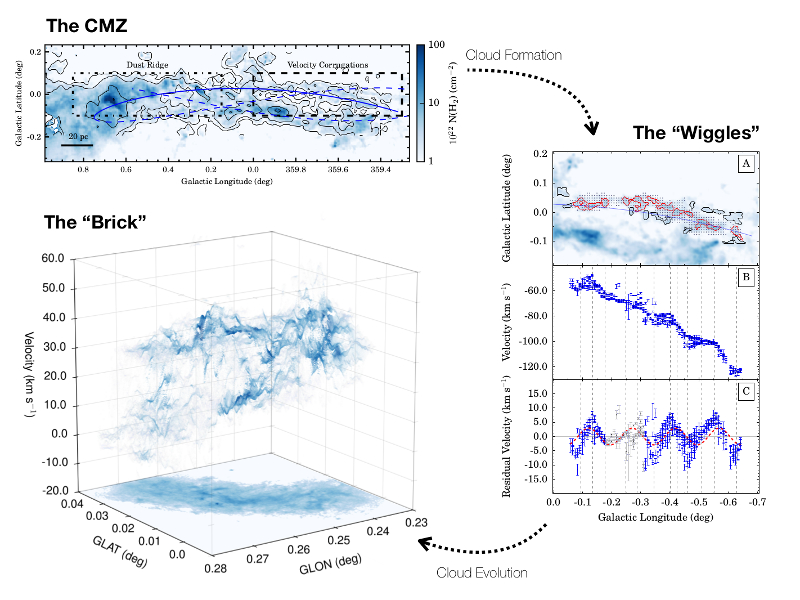
|
EPoS |
|
EPoS Contribution
|
|
Seeding the Galactic Centre Gas Stream: Initial Conditions for the Formation of Young Massive Clusters
Jonathan Henshaw MPIA, Heidelberg, DE | |
| The Central Molecular Zone (CMZ) of the Milky Way contains some of the most massive and dense molecular clouds and star clusters in the Galaxy, offering an important window into star formation under extreme physical conditions. Star and cluster formation in this environment may be closely linked to the orbital dynamics of the gas, the three dimensional distribution of which has been subject to intense scrutiny for several decades. In this contribution, I will present our systematic approach to studying the kinematics of dense gas in the central 250 pc of the Galaxy. I will focus on how this is helping us to untangle the 3-D structure of the CMZ and, importantly, how understanding the orbital dynamics may be critical for understanding the star formation process in this environment. I will present the recent discovery of oscillatory patterns in the dense gas kinematics, the extremes of which correspond to a sequence of young molecular cloudlets situated upstream from the dust ridge molecular clouds. Perhaps an observational archetype of gravitationally unstable gas, if confirmed, these velocity oscillations may have significant implications for understanding the formation of some of the most massive and dense molecular clouds within the Galaxy. This discovery will be discussed in the context of a new detailed investigation into the dynamics of the well-known CMZ cloud, "the Brick". As potential generational precursors to this enigmatic and dynamically complex cloud, I will argue that these pre-Brick cloudlets may represent the earliest phases of a directly observable (absolute) time sequence for star formation. | |
 | |
| Caption:
Top-left: Herschel-derived H2 column density map of the CMZ (Battersby et al., in preparation). The orbit of Kruijssen, Dale & Longmore (2015) is highlighted by the blue line. The black dashed and dot-dashed rectangles reflect the location of the velocity oscillations and the dust ridge, respectively. Right: A zoom-in of the region associated with the velocity oscillations. The panels from top-to-bottom show {l,b}, {l,v}, and {l,vresid}, respectively, where the latter refers to the residual velocity after removing the large-scale (orbital) velocity gradient. Bottom-left: A position-position-velocity image of "the Brick" highlighting the kinematic complexity of the cloud.
This image depicts a hypothesised evolutionary sequence. Clouds first form within the gas stream as a result of large-scale gravitational instability (the "wiggle" cloudlets). Clouds grow in mass by accreting material from their surroundings (the "wiggles"). Having been tidally-compressed at pericentre, sufficiently massive clouds ("the Brick") are then pushed into gravitational collapse, and ultimately, star and cluster formation. | |
| Collaborators: S. N. Longmore, LJMU, UK J. M. D. Kruijssen, ZAH, DE |
Key publication
Suggested Session: Molecular clouds |